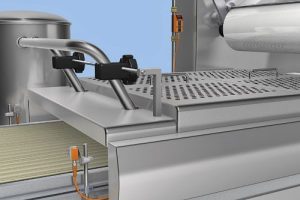Yokogawa Test & Measurement Corporation announces the release of the DLM5000HD series high-definition oscilloscopes. Positioned as a high-performance version of the DLM5000 series, the DLM5000HD series expands Yokogawa’s oscilloscope lineup with 500 MHz and 350 MHz frequency bandwidth models that deliver higher resolution for more accurate waveform analysis, and come with features that improve usability and enable easier setup.
Development Background
Yokogawa’s DLM4000 series of eight-channel mixed signal oscilloscopes released in 2012 and the successor DLM5000 series launched in 2020 have proven popular with developers of electronic and mechatronic devices. However, given the growing emphasis in recent years on measures that will help to decarbonize society, there is an increased need to make motors, inverters, and clean energy-related products such as solar power generation devices more energy efficient. This need is particularly acute in the power electronics industry, where the increase in applications for and production of next-generation power devices utilizing silicon-carbide (SiC) technology is driving the need for ever greater measurement precision. With its support of multi-channel measurement and its improved resolution on the vertical axis, the DLM5000HD series meets these needs.
Main Features
The DLM5000HD series consists of two 8-channel models (500 MHz DLM5058HD and 350 MHz DLM5058HD) and two 4-channel models (500 MHz DLM5054HD and 350 MHz DLM5034HD).
The DLM5000HD series offers 12 bit vertical resolution that is 16 times higher than that of the existing DLM5000 series, for greater accuracy in waveform observation.
This is particularly beneficial for developers of next-generation inverters, enabling the accurate observation of minute changes in high-speed signals. This allows the detection of phenomena that can cause unexpected anomolies.
Another useful feature of the DLM5000HD series is that the time-saving serial bus analysis auto-setup function, which automatically sets the optimal bit rate and threshold level, can now also be used with previously captured waveforms. This means that auto-setup can even be used for low-frequency signals, improving the efficiency of in-vehicle bus development and evaluation work.
The DLM5000HD series is able to store up to 1 billion points of acquired data, which is twice that of the DLM5000 series.This allows users to store history data on up to 200,000 captured waveforms as history waveforms*. In addition to doubling the number of waveforms that can be searched and compared using the long memory, this means a single device can measure the behaviour of braking systems and other apparatuses that needs to be captured at a high sampling rate for several milliseconds, improving the efficiency of evaluation and analysis work.
As with the DLM5000 series, measurements can be captured with up to 16 analog channels and 64 bits of logic (eight 8-bit logic channels) by using the dual-unit synchronous measurement (DLMsync) function to operate two 8-channel units. This allows the simultaneous measurement of both analog and logic signals to, for example, analyze numerous power-on sequences while debugging an electronic control unit.
* Waveforms that are automatically recorded in internal storage
Major Target Markets
- Car electronics
- Power electronics such as electronic devices, inverters, and power generation devices
- Electronics such as household appliances and air conditioners
- Mechatronics such as industrial devices
Applications
- Design and assessment of electric and electronic circuits
- Development and debugging of semiconductors, electronic devices, and embedded firmware
- Simultaneous measurement of analog signals and bus signals based on the CAN, CAN FD, and other in-vehicle standards
- Analysis of power and confirmation of the operation of power electronics
- Simultaneous measurement and assessment of high-speed signals and signals that fluctuate very little (for example, communication signals and mechatronics signals)
For more information:
 Instrumentation Monthly Test | Measurement | Control
Instrumentation Monthly Test | Measurement | Control











